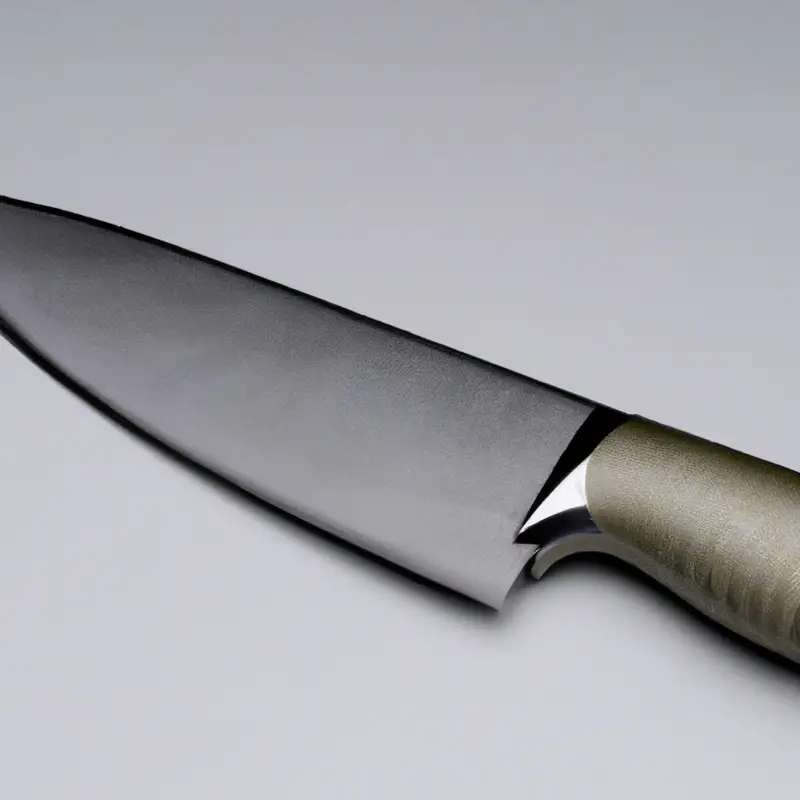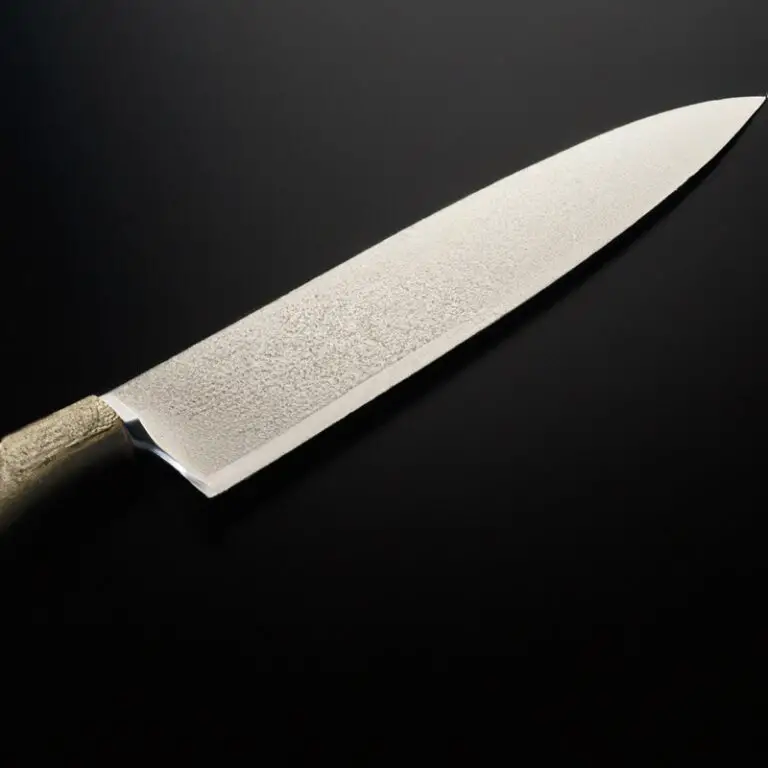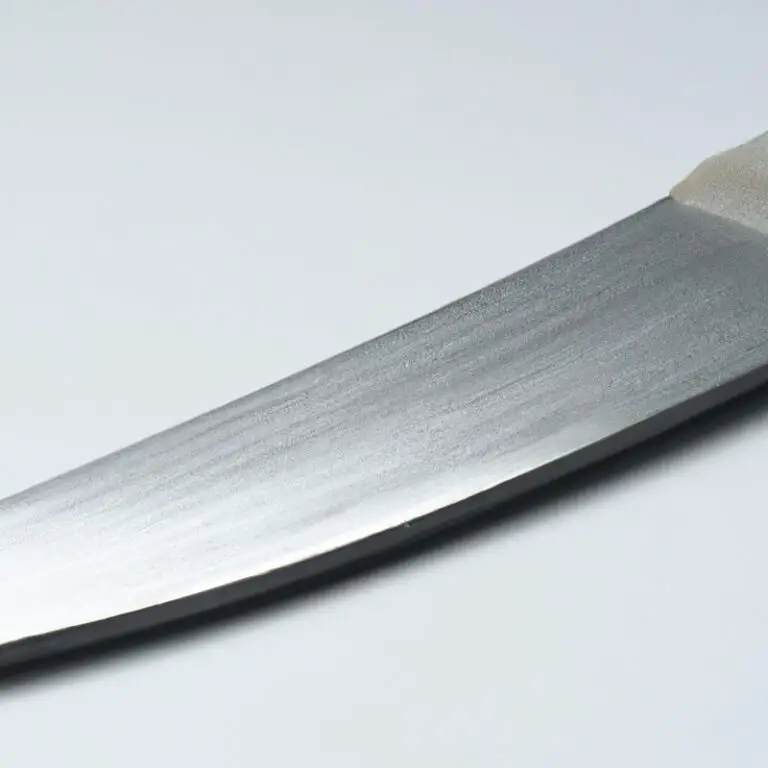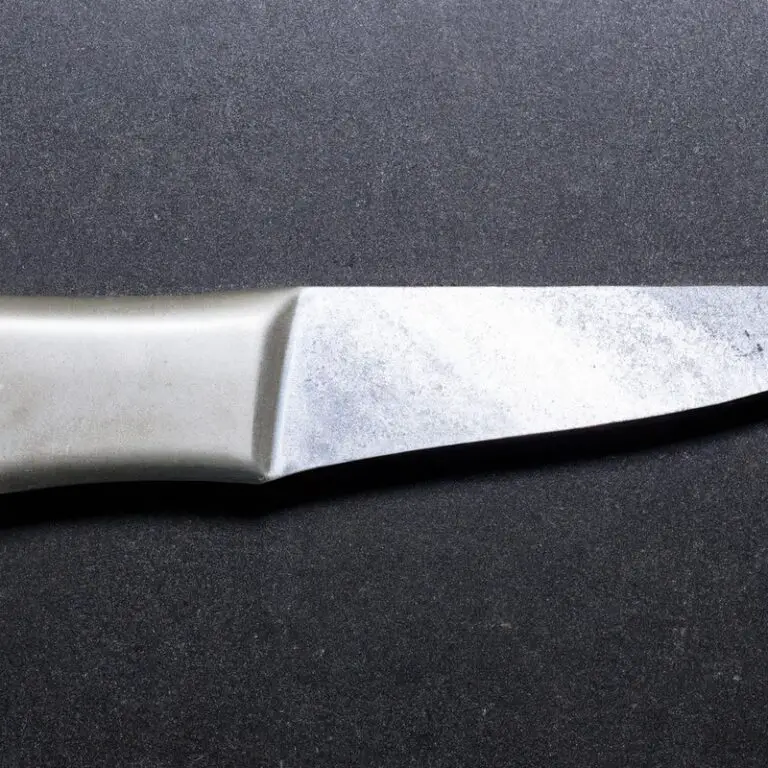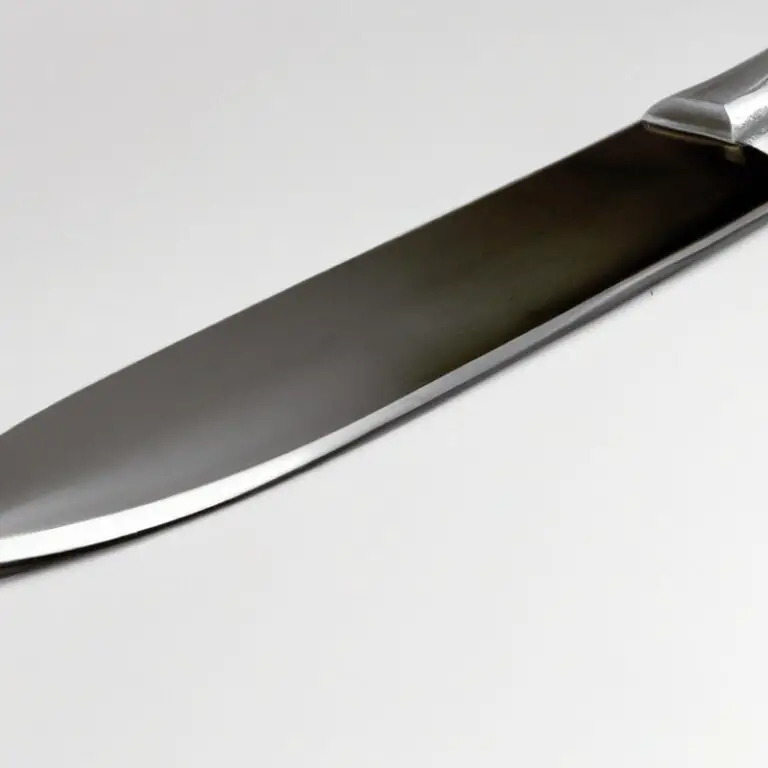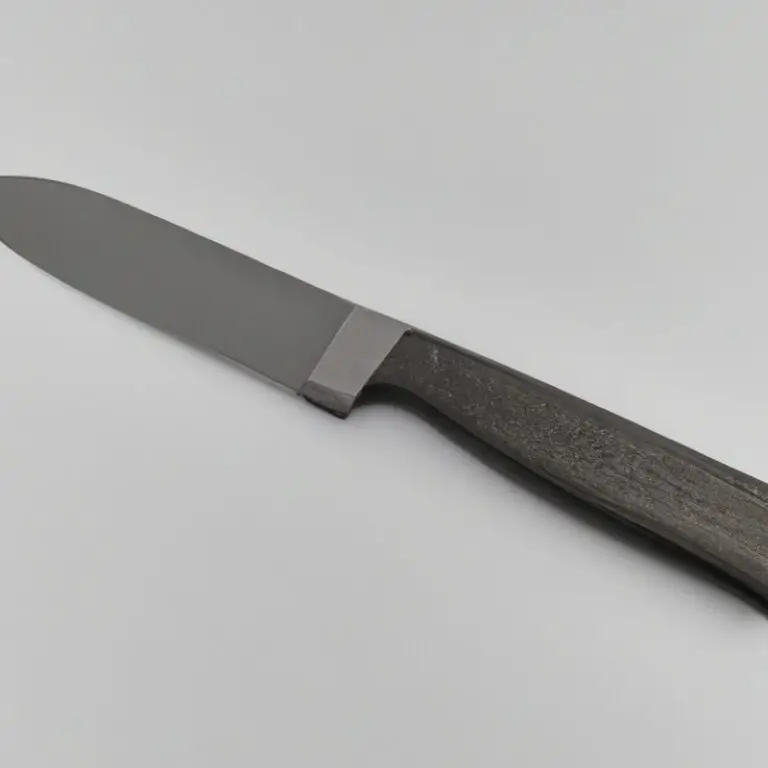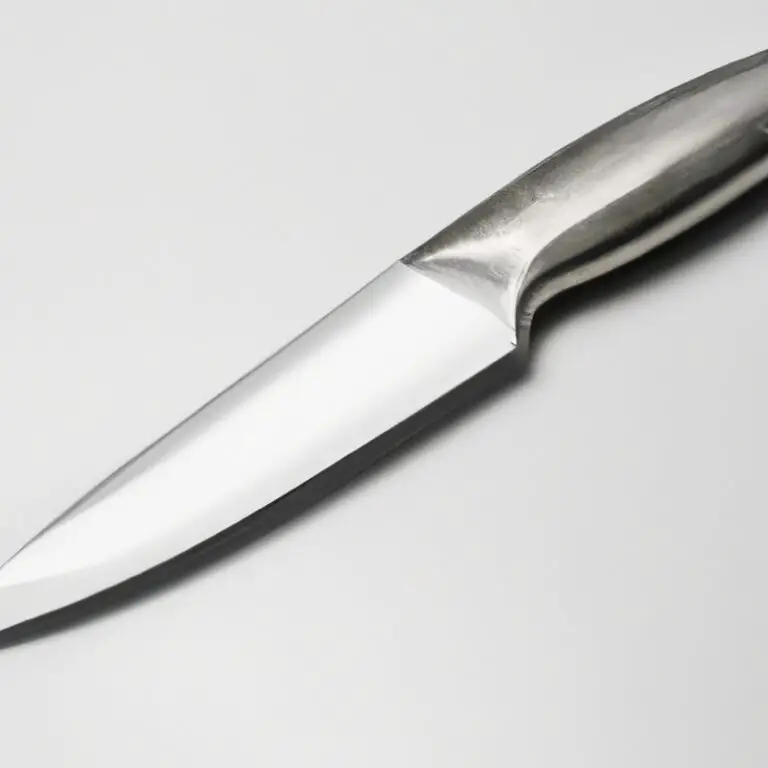How To Handle The Weight And Balance Of a Gyuto Knife? Master It!
Key Takeaways:
- Proper handling of a Gyuto knife requires attention to weight and balance to prevent injury and ensure optimal performance.
- Practice good knife technique, such as maintaining a relaxed grip and maintaining a consistent angle while cutting, to prevent accidents with your Gyuto knife.
- When selecting a Gyuto knife, consider factors such as weight, blade length, and balance to find the best fit for your needs and preference.
- Regular maintenance, including sharpening and honing, will keep your Gyuto knife performing at its best and help prolong its lifespan.
Have you ever struggled with achieving precise cuts while using a Gyuto knife? The secret to mastering this Japanese chef’s knife is understanding the delicate balance between weight and grip pressure.
In this comprehensive guide, I’ll share my expertise on the anatomy of a Gyuto knife, how to find the right balance for safe handling, and techniques for adjusting weight distribution to suit your cutting needs.
Whether you’re a beginner or an experienced chef, this article will equip you with the knowledge to elevate your knife handling skills and achieve stunning results in the kitchen.
| Technique | Pros | Cons |
|---|---|---|
| The Pinch Grip | Provides optimal balance and control | Might feel awkward at first |
| The Handle Grip | Simple and intuitive | May lead to less control over the knife |
| The Blade-Centered Grip | Provides balance between handle and blade control | May require more practice to master |
Understanding the Anatomy of a Gyuto Knife: A Guide to Weight and Balance
A Gyuto knife is a type of Japanese kitchen knife that translates to “cow sword.” It has a long, thin blade with a pointed tip, making it ideal for precision cutting and slicing meats, fish, and vegetables. Understanding the anatomy of a Gyuto knife is important in achieving proper weight and balance.
The blade is the most critical part of the Gyuto knife.
It can be made from different materials such as carbon steel, stainless steel, or high-carbon stainless steel. The construction of the blade determines its weight and balance.
A blade that is too heavy can cause hand fatigue and reduce precision when cutting.
On the other hand, a lightweight blade may not have enough power to slice through denser foods. The handle of the Gyuto knife also affects its weight and balance.
Handles can be made from different materials such as wood, plastic, or rubber.
A comfortable grip is essential to avoid slips and accidents. The handle’s weight should complement the blade to ensure a balanced knife, making it easier to handle and reducing the chances of injury.
When buying a Gyuto knife, consider the weight and balance of the blade and handle.
A balanced knife will give you better control, precision cuts, and less risk of injury. Practice proper knife technique, holding and positioning the knife with your thumb and index finger to control the blade’s movements.
Maintain your Gyuto knife’s blade by sharpening it regularly, using a sharpening stone or honing rod.
Frequent sharpening will help keep the blade sharp, making it easier to use and preventing injury due to the need for excessive force. Understanding the anatomy of a Gyuto knife, particularly its weight and balance, is crucial to achieve precision cuts and avoid accidents.
Choose a balanced knife that fits your needs and maintain it properly.
Grip and Pressure: Finding the Right Balance for Safe and Effective Knife Handling
Finding the right balance between grip and pressure is crucial for safe and effective knife handling. To achieve this balance, grip the knife handle firmly but not too tightly, allowing for proper control and movement.
Apply pressure to the knife’s blade as needed, but be careful not to put too much pressure as it can cause the blade to become misaligned or even chip.
Experiment with different grips and pressures to find what works best for you and the task at hand. Additionally, it is important to maintain a sharp blade to reduce the need for excessive pressure while slicing.
Remember, a comfortable and efficient grip will lead to a safer and more enjoyable cutting experience.
Achieving Precision Cuts with Proper Knife Balance: Tips and Techniques
Achieving precision cuts with a Gyuto knife requires proper knife balance. Here are a few tips and techniques to help you achieve this:
- Hold the knife at its balance point: The balance point of the knife is where the blade and handle meet. Holding the knife at this point will give you better control, making it easier to perform precision cuts.
- Use the correct grip: Use a pinch grip, where you grip the knife with your thumb and index finger at the base of the blade, to maintain a stable cutting position. It also allows for more control and precision.
- Make use of the rocking motion: Use the rocking motion, where you move the knife back and forth while keeping the tip of the blade on the cutting board, for faster and more efficient cutting.
- Ensure a sharp blade: A dull blade can throw off the balance of your knife and make it harder to achieve precision cuts. Keep your knife sharp and honed regularly.
- Practice, practice, practice: Like anything else, achieving precision cuts with a Gyuto knife takes practice. With time and practice, you will become more comfortable and confident using your knife, leading to better precision cuts.
By following these tips and techniques, you can achieve precision cuts with proper knife balance.
Balancing the Blade: How to Adjust Your Gyuto Knife for a More Comfortable Cutting Experience
Balancing the blade is crucial for a comfortable cutting experience with your Gyuto knife. You can adjust the balance by redistributing the weight to the handle or blade.
To move the weight towards the handle, you can add a counterbalance weight to the end of the handle.
This can be accomplished using materials like lead tape or beeswax. On the other hand, adding weight to the blade can be done by rounding the spine or making the blade thicker.
It’s important to find the right balance point, which is typically found where the blade meets the handle.
Adjusting the balance can improve the knife’s stability, allowing for a more controlled and efficient cutting experience. Keep in mind that adjusting the balance may alter the overall weight of the knife.
Experiment with different balances to find what works best for you.
Remember to test the knife’s balance before purchasing or making modifications. Overall, balancing your Gyuto knife’s blade can improve your comfort and precision during use, making your cutting experience much more enjoyable.
Weight Distribution Matters: Choosing the Right Gyuto Knife for Your Needs
The weight distribution of a Gyuto knife is crucial for comfortable and efficient cutting. When selecting a Gyuto knife, it’s essential to consider the weight and balance of the knife to match your cutting needs.
A well-balanced knife will reduce the strain on your wrist and hand’s muscles, preventing fatigue and discomfort.
Typically, a Gyuto knife’s weight ranges between 130g to 240g, and some manufacturers provide various weight options to choose from, catering to a variety of preferences. It’s recommended to test the weight of the knife before purchasing to ensure comfort and ease of handling.
Ultimately, the right weight and balance of a Gyuto knife can make a significant difference in the quality of your cuts and overall user experience.
A Guide to Sharpening Your Gyuto Knife: Maintaining Optimal Weight and Balance
Maintaining the optimal weight and balance of a Gyuto knife requires regular sharpening. A dull knife not only makes cutting difficult but also strains the user’s wrists and hands.
To sharpen your Gyuto knife effectively, ensure you have the right tools such as sharpening stones and honing rods.
Begin by holding the knife at a 15-degree angle against the sharpening stone and using a consistent back-and-forth motion. Finish by honing the edge with a honing rod to remove any remaining burrs.
Remember to maintain a steady grip and proper pressure to prevent accidents and achieve the desired sharpness.
Sharpening your Gyuto knife regularly not only prolongs its lifespan but also ensures that it remains balanced and weighted correctly for optimal performance.
Balancing Act: The Importance of Weight and Balance in Different Cutting Techniques
Achieving the perfect cut requires a balanced knife. Weight distribution plays a crucial role in determining how well a knife performs various cutting techniques.
An imbalanced knife can lead to an uncomfortable cutting experience and even injuries.
Balance can be adjusted by changing the handle’s weight or by adding weight to the blade’s tip. Different cutting techniques require different weight distributions.
For example, a heavier blade is more suited for chopping, while a lighter blade is ideal for precision cuts.
Understanding the importance of weight and balance in various techniques can help you choose the right blade for your needs and give you better control over your cuts.
Safety First: How to Maintain Proper Weight and Balance While Using Your Gyuto Knife
To ensure safe and efficient use of your Gyuto knife, it is essential to maintain proper weight and balance. Start by using a comfortable grip that distributes equal pressure across the knife handle and blade.
Avoid using excessive force, as this can cause the blade to slip, leading to serious injuries.
Find a comfortable angle to hold the blade, and keep your hand and wrist in a neutral position to avoid straining your muscles or nerves. When choosing a Gyuto knife, look for one that has a well-balanced blade and handle that suits your cutting style and needs.
Remember to sharpen your knife regularly to maintain its weight and balance, ensuring precision cuts every time.
Always prioritize safety and take your time when handling your Gyuto knife, as rushing or carelessness can lead to accidents.
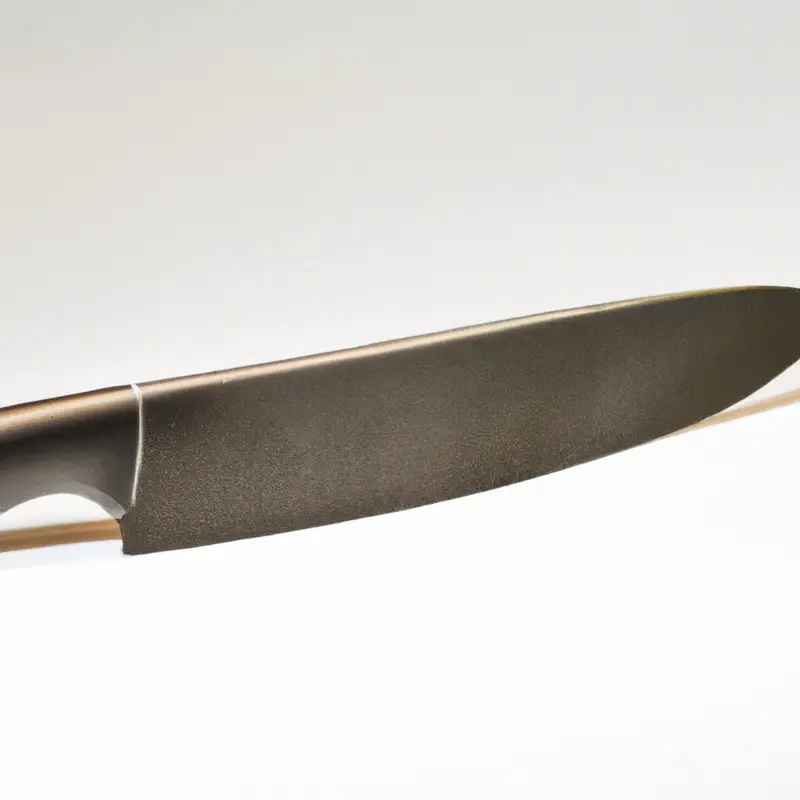
Advanced Knife Handling: Mastering Weight and Balance for Smooth and Efficient Cutting
Mastering weight and balance is essential for advanced knife handling, as it directly impacts the smoothness and efficiency of your cuts. To achieve this, it’s important to have a good understanding of the anatomy of your Gyuto knife and how its weight is distributed.
When using your Gyuto knife, the handle and blade should be in perfect balance.
This means that there should not be too much weight on either the handle or the blade, as this will result in uneven cuts and make the knife more difficult to control. To achieve optimal weight and balance, you should experiment with different grips and pressures, adjusting them to suit your cutting style.
Additionally, choosing the right Gyuto knife for your needs is important, as different knives have different weight distributions.
It’s also crucial to maintain proper weight and balance while using your Gyuto knife, as this will help you avoid accidents and injuries. Regular sharpening and maintenance will help you retain the knife’s optimal weight and balance, ensuring consistent and effortless cuts.
In summary, mastering weight and balance is crucial for advanced knife handling.
By understanding the anatomy of your Gyuto knife, experimenting with different grips and pressures, choosing the right knife for your needs, and maintaining proper weight and balance, you can achieve smooth and efficient cutting.
Finding Your Sweet Spot: Experimenting with Weight and Balance to Perfect Your Cutting Style
Finding your sweet spot is essential when it comes to perfecting your cutting style with a Gyuto knife. The sweet spot refers to the area on the blade that balances weight distribution and allows for a smooth cutting experience.
To find your sweet spot, experiment with different grips and pressure levels to determine what feels most comfortable and effective for you.
It may take some trial and error, but once you find your sweet spot, you’ll notice improved precision and ease in your cutting. Pay attention to the weight and balance of your Gyuto knife, as these factors can greatly impact your sweet spot.
If your knife feels too heavy or unbalanced, it can throw off your cutting technique and make it difficult to find the sweet spot.
Try adjusting the weight or balance of the knife through sharpening, adding weights, or using different cutting techniques until you achieve the proper balance. Remember to prioritize safety and always maintain proper technique while experimenting with weight and balance.
With practice and patience, you’ll find your sweet spot and achieve optimal results with your Gyuto knife.
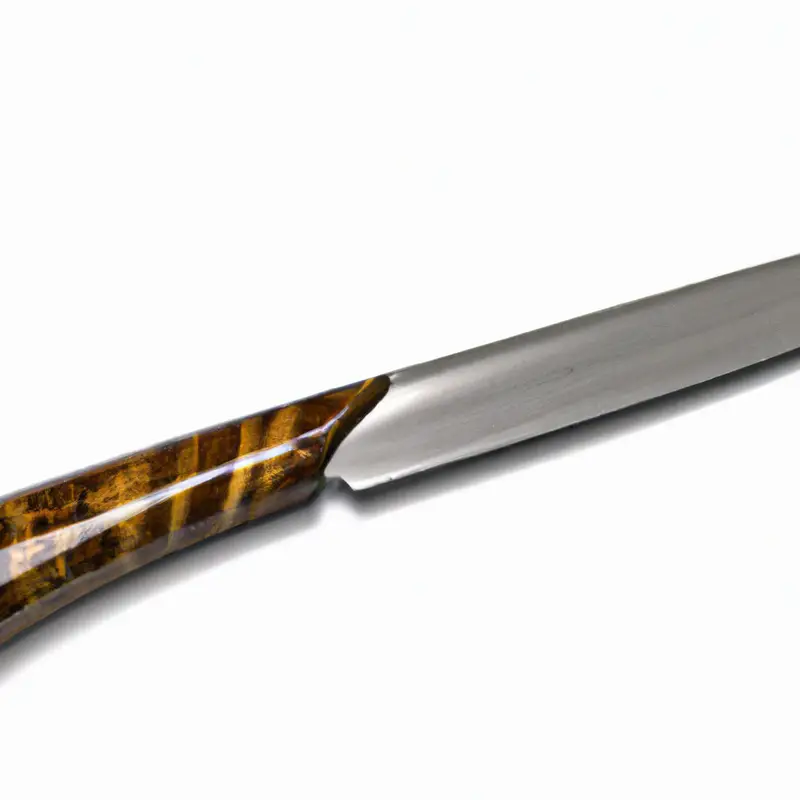
Final Verdict
Mastering the weight and balance of a Gyuto knife is crucial for achieving safe, efficient, and precise cuts. By understanding the anatomy of the knife, finding the right grip and pressure, and adjusting the weight distribution, you can elevate your cutting experience to the next level.
Remember to always prioritize safety and invest in a high-quality Gyuto knife that aligns with your needs and preferences.
With these tips and techniques, you can become an expert in knife handling, impressing your guests and improving your cooking skills. Stick to proper maintenance practices and practice different cutting techniques to find your sweet spot.
Don’t underestimate the impact of weight and balance on your cutting performance and make sure to incorporate these skills into your kitchen routine.
With practice and dedication, you can become a master of your Gyuto knife, achieving the perfect balance of form and function.

